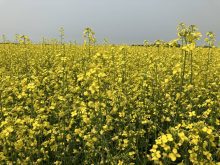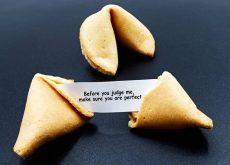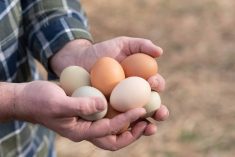China has been very much in the farm media in Western Canada in the past months. In September 1980 it was my good fortune to be part of a mission to China from Saskatchewan. Our team of four was charged with the task of determining the feasibility of establishing a dryland demonstration farm in China to display Saskatchewan practices and equipment.
I thought it may be of interest to readers to relay my impressions of agriculture and society in China almost 40 years ago and what it might mean for today.
A long history
In attempting to understand how such a huge population can function, my first order of business at that time was to spend time in the library studying the very long history of China. That reading told a story of a country that alternated from reaching out to relate to many other parts of the world to reverting to almost complete isolation from other countries.

The history of our modern agriculture as practiced in the clay belt of western Saskatchewan goes all the way back to 1906 when my grandfather and yours broke the prairie sod to make it into farmland. Agriculture in China goes back thousands of years which makes it very difficult for us to comprehend. China has also had technology and accomplishments that go back a thousand years or more.
Visiting the Iron Pagoda (see at bottom) in the city of Kaifeng had a major impact on me. The Iron Pagoda was built in the year 1049 and the construction materials were glazed brick and stones (its name comes from its colour, not the building material). It amazed me that they had such advanced technology that long ago.
Read Also

Gentle treatments for pain in the neck
Heading toward year-end, people unknowingly tense up against the cold and busyness, causing neck pain that can often be treated with appropriate support and gentle mobility, athletic therapist Kathlyn Hossack says.
The Iron Pagoda’s original function was to securely store books, which shows the importance the Chinese have placed on preserving knowledge. Thirty-eight years after I took my photo, you can type “Iron Pagoda Kaifeng China” into Google Earth it will take you to the west gate of the park. Look around and you will see the Iron Pagoda — sticking up like a high rise. Of course, there is no street view on Google Earth in any part of China but an oblique view makes it easy to find.
We all know the more recent history of China, starting in 1949 with the famous March by Mao Tse-Tung (now spelled Mao Zedong, 1893-1976) and the formation of the Peoples Republic of China. China’s land reform involved eliminating all landlords and giving the land to the peasants. The Cultural Revolution of the 1960s was launched to rid China of all the elite and get back to real peasant strength. After Mao’s death in 1976 change started and China began to engage with other countries — Canada being early to the game.

When we arrived in China in 1980 it was still much as it had been for the past decades but they were determined to modernize. China’s stated goal was to become a modern world power by 2000. It was made plain to us that our hosts were struggling to recover from the downgrading that was part of the Cultural Revolution. Some talked about intellectuals like themselves having been sent to the countryside to plant paddy rice.
Chinese hospitality
The work of Canadian Norman Bethune meant that Canada was held in high regard in China. We received the very best hospitality and the best of what they had at that time. Saskatchewan paid to get us there and China took care of us while we were in the country.
We had a dedicated spacious van complete with driver, interpreter, technical people that rotated with the venue being visited and last, but not least, a purser. Our purser carried a briefcase full of money and paid for all of our food and accommodations.
Our first meal was at a high-end Beijing restaurant. Large amounts of food were placed in the middle of the table and our guests continually used their chopsticks to pile food on our plates. I had been raised to clean up my plate or so was struggling to see how I would eat it all. We soon learned that it was poor etiquette to clean your plate — that showed you could have eaten more. It was a huge surprise to me to see that a country where food security had been an issue many times would have anything to do with wasting food.
Staff from the Canadian Embassy alerted us to local etiquette. The Embassy’s dedicated people were essential to allowing us to complete the task and we were very grateful for their knowledge and help.

Our exposure to Chinese agriculture was visits to various state farms. Each visit started in a comfortable common room with soft furniture, a cup of tea and sincere greetings. Hospitality was paramount and we had the best they could offer. In the outlying farms, the main room still had portraits of Mao and Norma Bethune prominently displayed. In main cities, those photos had been discarded.
The future
I have no idea where the current situation might lead us but I do have some observations.
Forty years ago China was struggling to recover from decades of degeneration. My notes from our mission say, “They keep coming back to the point that they want new big complicated machinery and do not wish to evolve.” When subsequent delegations visited Saskatchewan we made a point of taking them to the Western Development Museum in Saskatoon to show them how our system evolved and changed over the decades.

However, we must admit that China’s development and progress in technology, building, manufacture, digital technology and other areas has been astounding. It is hard for us to really understand the actual political system but for the past decades the big leader at the top has changed every five years. That changed recently to a lifetime top gun and to me that is of great concern. The huge development has not brought prosperity to all and has not been without some very rough spots.
In considering the future of China and the world we must remember the past. China’s history is mind-boggling. Forty years in China is like a skip of a heartbeat to our history. They are prepared to wait.
As Alf Bryan often said, “I may be wrong but.” I do not think our current troubles are going away anytime soon. Let us hope I am wrong.

















